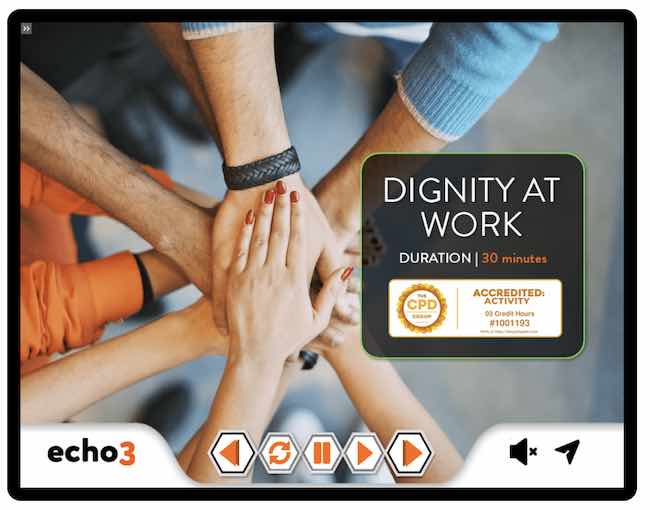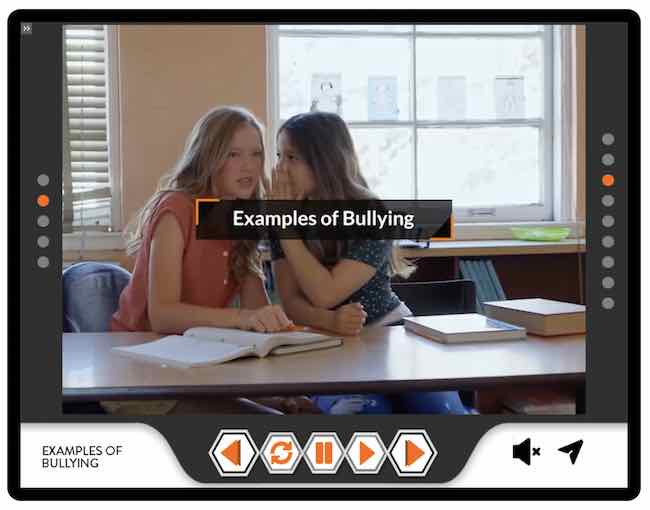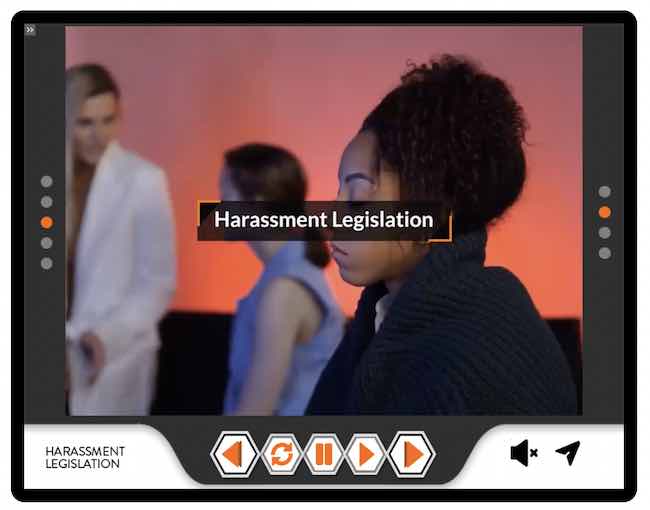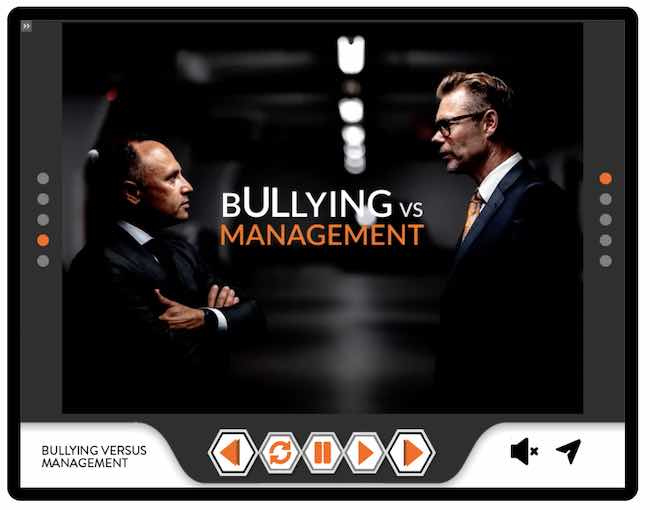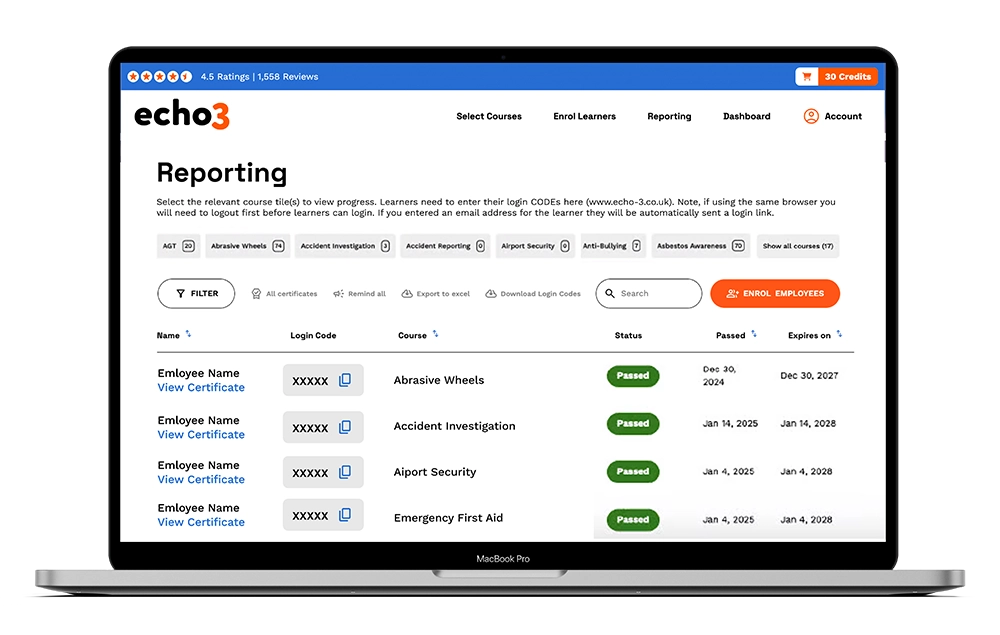Dignity at Work Course

Echo3’s Dignity at Work training supports the creation of workplaces free from incivility, bullying, and harassment.
Under the Equality Act 2010, employers have a legal duty to provide a work environment free from harassment. Beyond legal compliance, addressing bullying and harassment is essential, as such behaviour can seriously impact staff wellbeing and make working life miserable.
Failing to foster a positive working environment can lead to costly legal action, increased absenteeism, low morale, and reduced work quality, ultimately damaging both your business and your reputation as an employer.
According to a 2017 survey of civil service staff, 11% reported personally experiencing bullying or harassment. Of those, only 36% chose to report the incident, and just 1 in 5 felt their concerns were properly addressed.
Despite increased awareness, the issue persists—as recently as today, 1 in 10 staff still report experiencing bullying (BBC).
This Dignity at Work course is developed in line with best-practice guidance from Citizens Advice.
It helps staff understand their individual responsibility in maintaining a workplace free from inappropriate behaviour, while promoting a positive culture that does not tolerate bullying or harassment.
This CPD-accredited course takes just 50 minutes to complete and features engaging motion graphic videos. With instant access upon purchase, it offers a quick, cost-effective way to train staff and earn Echo3 certification.
Dignity at Work Course Content
Unit 1: Introduction
An overview of what you will learn in the course, including key learning objectives to guide your progress.

Unit 2: Bullying
This unit explores what constitutes bullying, its legal implications, common examples, and how often it occurs. You’ll also learn what does not qualify as bullying, how to communicate effectively, and approaches to resolving bullying in the workplace.
Unit 3: Harassment
This unit covers the definition of harassment, relevant legislation, the different categories of harassment, and a focused look at sexual harassment in the workplace.
Unit 4: Prevention
This unit looks at the difference between bullying and legitimate management, the importance of a Dignity at Work policy, the roles and responsibilities in preventing workplace issues, grievance procedures, and the role of trade unions.
Unit 5: Responding to a Complaint
This unit outlines the procedures for handling bullying and harassment complaints, including how to respond appropriately, conduct a formal investigation, actions to take if a complaint is upheld, and the role of external bodies.
Unit 6: Quiz
The course concludes with a 15-question multiple-choice quiz. A score of 80% or higher is required to receive your Echo3 Dignity at Work certificate, which will be emailed upon successful completion. The quiz can be retaken if needed.
Dignity at Work Course Certificate
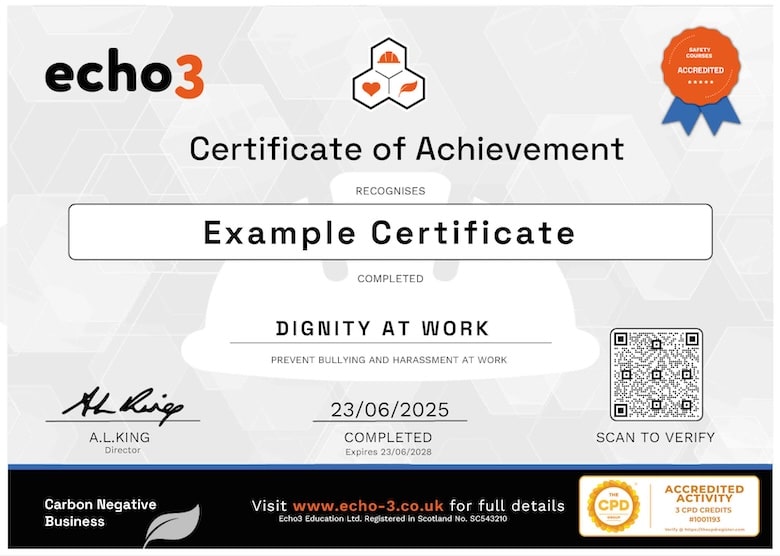
Download and Print Your Certificate
- Written in compliance with the Equality Act 2010
- Developed by qualified health and safety professionals
- Accredited by CPD – learn more about CPD here
- Last Updated September 2021
- To gain the certificate you must complete the assessment which involves 15 questions.
- The online Dignity at Work certificate is valid for 3 years.
Course Preview
Echo3 courses include engaging motion-graphic video content, with full english subtitles
Reviews
How to Get Certified in 3 Steps
Individual Learners


Benefits for Individuals
-
Engaging video-based content
-
Learner dashboard included
-
Instant access after payment
-
Free course retakes
-
Shareable digital certificate
 QR Code Certificate
QR Code Certificate




Bulk Buying Discounts
What are the Dignity at Work course objectives?

The Echo3 online dignity at work course aims to foster a respectful and inclusive workplace culture.
Participants develop an understanding of the importance of dignity, equality, and diversity, gaining insights into the legal frameworks and policies that underpin these principles.
The Dignity at Work course enhances awareness of inappropriate behaviours, such as bullying and harassment, and provides tools to recognise, prevent, and address these issues effectively.
Participants will also learn effective communication strategies to promote a positive work environment, emphasising empathy and active listening.
Ultimately, the course aims to empower individuals with the skills to contribute to a workplace where every member is treated with dignity and respect, fostering collaboration, employee well-being, and organizational success.
What are the Learning Outcomes?
 On successful completion of this Dignity at Work training, learners will be able to:
On successful completion of this Dignity at Work training, learners will be able to:
- Define the key aspects of dignity at work, including what is meant by harassment and bullying.
- Understand the relevant legislation behind dignity at work including individual responsibilities.
- Identify the potential impacts of adverse behaviour on workplace relationships.
- Understand the difference between effective staff management and inappropriate/bullying behaviours.
- Deal more effectively with complaints of harassment or bullying.
- Identify steps that support a positive and inclusive working environment.
Who should take this Dignity at Work training?

The Echo3 online Dignity at Work course is valuable for employees at all levels, including managers and HR professionals.
It is ideal for anyone committed to fostering a respectful, inclusive workplace culture, preventing harassment and discrimination, and strengthening interpersonal skills for effective communication and collaboration.
What is harassment?
Harassment is defined in law as any unwanted behaviour that violates an individual’s dignity or creates an intimidating, hostile, degrading, humiliating, or offensive environment for them.
Under the Equality Act 2010, this definition of harassment applies specifically to behaviour related to the following nine protected characteristics:
- Age
- Disability
- Gender reassignment
- Marriage and civil partnership
- Pregnancy and maternity
- Race
- Religion or belief
- Sex
- Sexual orientation
Discrimination by association is also recognised under the law. This means a person can be protected even if they do not personally possess a protected characteristic but are treated unfairly due to their connection with someone who does—such as a family member or friend.
Harassment can take various forms, which are commonly grouped into three broad categories:
- Verbal– e.g. offensive remarks, jokes, or name-calling
- Visual or Nonverbal– e.g. inappropriate gestures, displays of offensive material
- Physical– e.g. unwanted touching, physical intimidation
What is bullying?
According to ACAS (Advisory, Conciliation and Arbitration Service), bullying is defined as unwanted behaviour that is “offensive, intimidating, malicious or insulting.”
Bullying can take the form of a one-off incident or repeated behaviour over time. It may come from an individual or a group, and while it is often associated with a manager targeting a team member, it can also occur in the opposite direction—known as ‘upward bullying’, where staff target a manager or senior employee.
Examples of bullying behaviour include:
- Personal insults or unfair criticism
- Deliberately ignoring or excluding someone
- Setting unrealistic or impossible targets
- Shouting or aggressive communication
- Making inconsistent or unreasonable demands
- Blocking access to training or promotion opportunities
It’s important to note that reasonable management actions—such as setting expectations, providing performance feedback, or holding staff accountable—do not constitute bullying when carried out in a fair and respectful manner.
While constructive feedback may sometimes feel uncomfortable, this alone does not mean bullying is taking place. For this reason, any concerns raised should be assessed objectively, considering both the intent and the impact of the behaviour.
What is incivility?
Workplace incivility refers to low-intensity rude or discourteous behaviour, often subtle but still disrespectful. Examples include interrupting, eye-rolling, intentionally ignoring someone, undermining colleagues, or making belittling comments in public.
While incivility may seem minor compared to bullying, it can be just as harmful, leading to increased stress, reduced collaboration, and a negative impact on motivation and performance. Addressing incivility is essential when promoting dignity at work.
It’s important to recognise that incivility is often subjective, what feels disrespectful to one person may not affect another. For instance, texting while someone is speaking might be seen as rude by some and acceptable by others. Regardless of intent, if behaviour leaves someone feeling disrespected, it can have real consequences. Repeated, seemingly minor acts can accumulate over time, creating a toxic environment.
How to respond to a compliant?
All complaints should be handled in accordance with your organisation’s relevant policies and procedures, such as Grievance and Disciplinary Policies, Dignity at Work, Health & Safety, and Equal Opportunities.
When a complaint of bullying is raised, it is essential that employers always respond. Complaints should be investigated promptly, fairly, thoroughly, and confidentially. This not only helps establish the facts—rather than relying on subjective perceptions—but also increases the likelihood of a positive resolution.
Delaying action or failing to address a complaint can allow the situation to escalate and may ultimately result in legal consequences for the organisation.
Related Courses
Communication Skills – how to communicate effectively at work
Delegation Skills – how to delegate effectively
DSE – How to work safely with display screen equipment
Office Safety – how to work safely in an office
Access all Echo3 courses with credit.









